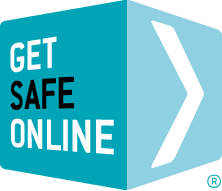For private individuals and small businesses, these objects include IP cameras used for security, surveillance and infant monitoring, central heating controllers, connected televisions / set top boxes, multi-room entertainment devices, ‘smart’ electrical goods (from refrigerators to bathroom scales to dimmable, programmable lighting) and increasingly, motor vehicles. All are increasingly using the internet to inform of status or performance, or increase efficiency, in real time. Many – connected to the internet via the home or business Wi-Fi router, enable their owners to monitor and manage some or all of their functions remotely from their mobile phone or other device.
For larger organisations, manufacturing facilities, power generation plants, energy grids, healthcare facilities and transportation systems are increasingly becoming similarly connected, providing 24/7 connection to the process manager through to the CEO, wherever they are in the world.
The risks
However, because these objects are connected to the internet, just like computers and mobile devices they are vulnerable to unauthorised intrusion or hacking. But the risk is in fact greater as it simply does not occur to many people that these objects can be hacked.
It seems unlikely that anybody would want to hack into your refrigerator. However, there have been prolific cases of domestic and business IP CCTV cameras being hacked into with the intention of spying on their owners’ activities and families, in some cases with the resulting video footage streamed online for all to see. The risk is that you and your family members could be illicitly observed in your own home.
Whether it is your cameras or your other domestic or business items which are accessed, the privacy and confidentiality of your home, business, family, employees and customers is compromised.
Safeguarding your ‘things’
Every connected item you buy has to be configured to connect to your router, and most require a password, which in most cases is pre-set at the factory. We advise that you:
- Change the default password to one that is difficult to crack/guess but that you can remember. Keep your passwords to yourself. Read our advice on passwords here.
- Ensure your Wi-Fi is secured to WPA2 level at all times and do not reveal the access code to unauthorised persons.
- Read and familiarise yourself with the manufacturer’s instructions, especially on connecting to the internet. If anything is not clear, contact the manufacturer.

